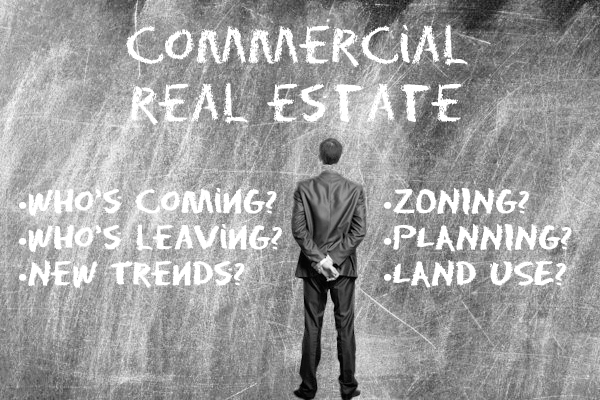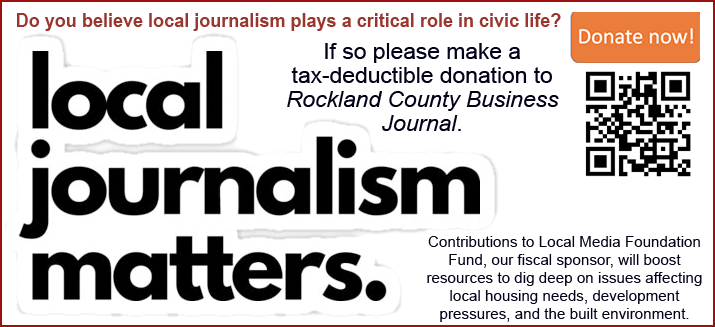|
RCBJ-Audible (Listen For Free)
|
Smart Growth, Mixed-Use Development, Infill Housing, And Walkability—Aren’t Just Academic Buzzwords
By Paul Adler, Esq.
 The Town of Clarkstown Planning Board is currently reviewing two significant proposals for multi-family housing developments along Main Street in the hamlet of New City. These proposals, centered around the DeCicco’s Shopping Center and the ShopRite Retail Center, represent more than just new housing—they are the foundation for revitalizing New City’s core into a vibrant, walkable village.
The Town of Clarkstown Planning Board is currently reviewing two significant proposals for multi-family housing developments along Main Street in the hamlet of New City. These proposals, centered around the DeCicco’s Shopping Center and the ShopRite Retail Center, represent more than just new housing—they are the foundation for revitalizing New City’s core into a vibrant, walkable village.
These projects are emblematic of smart growth: the strategic infill of housing within existing infrastructure that promotes sustainability, stimulates local economies, and encourages a more walkable, interconnected community. If approved, these developments will usher in a long-overdue transformation of Main Street that aligns with modern urban planning trends, while respecting the suburban character that residents value.
The Opportunity Before Us
For decades, suburban municipalities have wrestled with the delicate balance between growth and preservation. Clarkstown, and New City specifically, are no exception. But there comes a time when evolution is not only desirable—it becomes necessary for long-term viability.
These housing proposals will infuse hundreds of new residents into the heart of New City, increasing population density in precisely the right way—near services, transit, and retail hubs. This increased density supports local businesses, encourages new commercial investment, and creates a natural demand for enhanced pedestrian infrastructure. With more people living within walking distance of shops, restaurants, and services, we begin to create a true village atmosphere—where residents don’t just drive through Main Street, they live it.
More foot traffic means more dollars spent locally. That translates into higher sales tax revenue, which can be reinvested in community services. Property tax revenues will also increase, strengthening municipal budgets without disproportionately impacting school districts or traffic patterns. In fact, studies have shown that multi-family housing built near transit and shopping generates more tax revenue per acre while consuming fewer municipal services per capita than traditional single-family sprawl.
Exclusionary Zoning: The Enemy of Progress
Too often, well-meaning opposition to development is rooted in outdated models of land use and zoning—what I call exclusionary zoning. It’s the kind of policy that limits housing diversity and artificially suppresses growth in areas best suited to accommodate it. Exclusionary zoning always gets you what you don’t want: stagnation, unaffordability, and a weakening tax base.
Clarkstown is not immune to these forces. But if we are serious about maintaining the economic health of New City and Rockland County more broadly, we must embrace a new vision that welcomes a broader spectrum of housing choices. This is not about paving over paradise; it’s about using the land and infrastructure we already have more intelligently.
We must remember that young professionals, seniors, and even downsizing families are all looking for flexible, lower-maintenance housing in walkable communities. The kind of housing being proposed on Main Street is exactly what will allow us to retain talent, support aging in place, and attract new residents who contribute to our tax base and our civic life.
Smart Growth is Sustainable Growth
Smart growth principles—such as mixed-use development, infill housing, and walkability—aren’t just academic buzzwords. They’re proven strategies that towns across the region and nation are using to stay competitive and livable. When done right, smart growth protects open space, reduces congestion, and enhances quality of life.
Main Street in New City is already poised for this kind of evolution. The infrastructure is in place. The retail anchors are there. What’s missing is the people. And that’s what these proposals aim to bring—residents who will make Main Street a destination, not just a strip of parking lots and storefronts. The ripple effects of this kind of growth are far-reaching and largely positive: increased investment, revitalized public spaces, and a sense of community pride.
The Time is Now
This is a pivotal moment for New City. We have before us a choice: embrace smart, targeted growth that benefits the entire community, or cling to outdated zoning that strangles our economic and social potential. I urge local leaders and residents to support these proposals not just for what they bring today, but for what they represent tomorrow.
Because when you think long-term—when you prioritize walkability, diversity of housing, and economic vitality—everyone benefits. And remember: Exclusionary zoning always gets you what you don’t want. Smart growth gets you a Main Street we can all be proud of.
Paul Adler is Chief Strategy Officer of Rand Commercial. paul.adler@randcommercial.com












